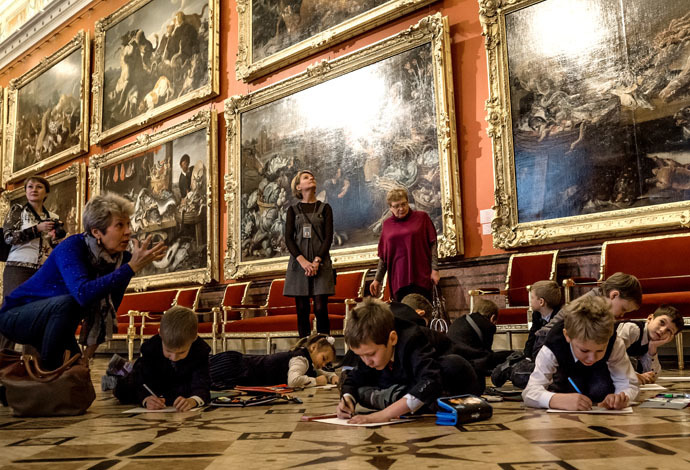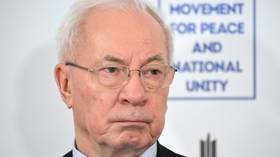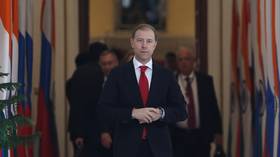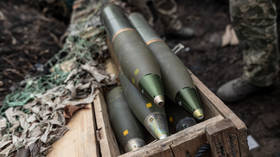250 years of splendor: Dazzling 3D show kicks off Hermitage celebrations
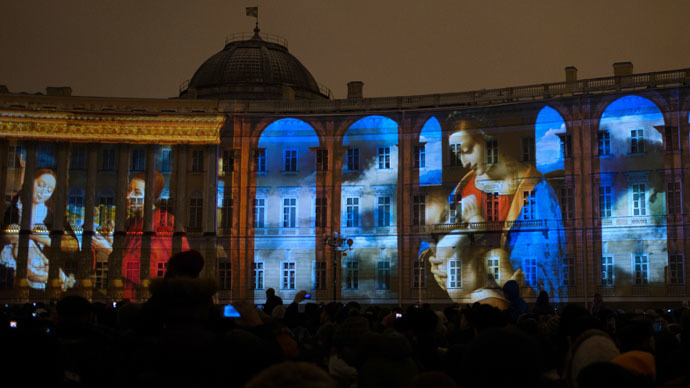
Russia’s grandest museum - the Hermitage - is celebrating its 250th anniversary. The festivities kicked off with a unique exhibition of a Parthenon sculpture, which left the British Museum for the first time, and a dazzling 3D-mapping projection.
The celebrations marking the anniversary of the State Hermitage Museum in St. Petersburg are planned to take place for three days – from December7 till 9.
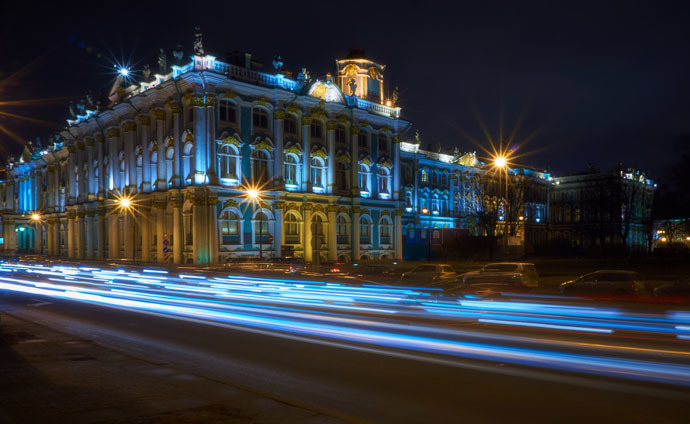
Late on Saturday, a colorful high-definition 3D mapping projection called the “Dance of History” started the festive events. A series of videos illustrating the most significant historic events of St. Petersburg and the Hermitage, as well as the museum’s finest pieces of art were projected on to the Winter Palace. The display was accompanied by the performance of classical music from different time periods and poetry recitals.
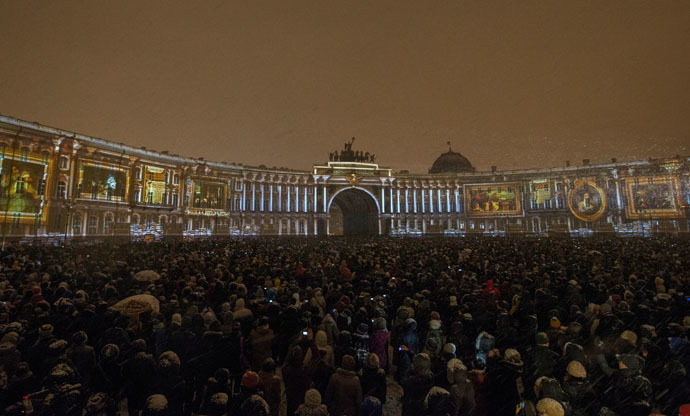
In honor of the anniversary, the museum will host a number of exhibitions, including the one with the great works lent by the British Museum. The exhibition will feature the reclining marble sculpture of the river god Ilissos, part of the famous Elgin Marbles, which 25 centuries ago decorated the facade of Greece's Parthenon temple.
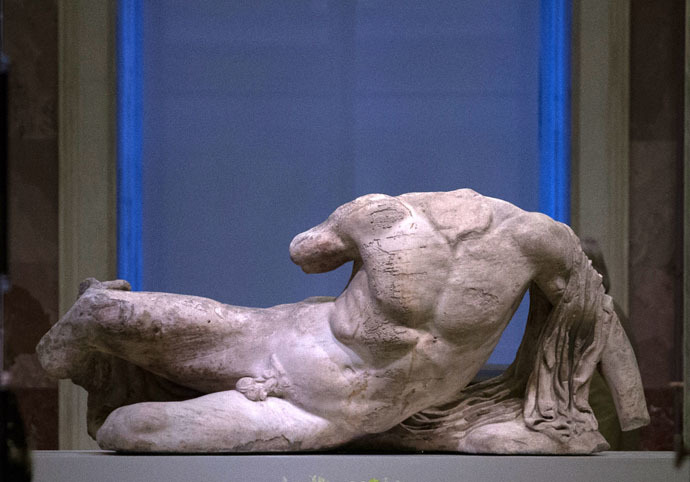
This is the first time British Museum has been asked to lend any of the Parthenon sculptures. However, the gesture was criticized by the Greeks calling it a “provocation”. In a long-standing dispute, Athens is arguing that the art works were removed from their native land illegally, while the country was under Turkish occupation as part of the Ottoman Empire.
READ MORE: Stumbling block: Greeks offended by Brits lending ancient sculpture to Russia
Сегодня 250 лет празднует @state_hermitage! Поздравляем с юбилеем крупнейший в России художественный музей! pic.twitter.com/5t7TUVSv5F
— Google Россия (@GoogleRussia) December 7, 2014
On Saturday, the Hermitage also opened the exhibition dedicated to the iconic British painter Francis Bacon featuring 25 of his works for the first time visiting Russia.
Hermitage workers also commemorated the museum’s founder – Empress Catherine the Great - by laying flowers on her tomb in the Peter and Paul Cathedral on Sunday.
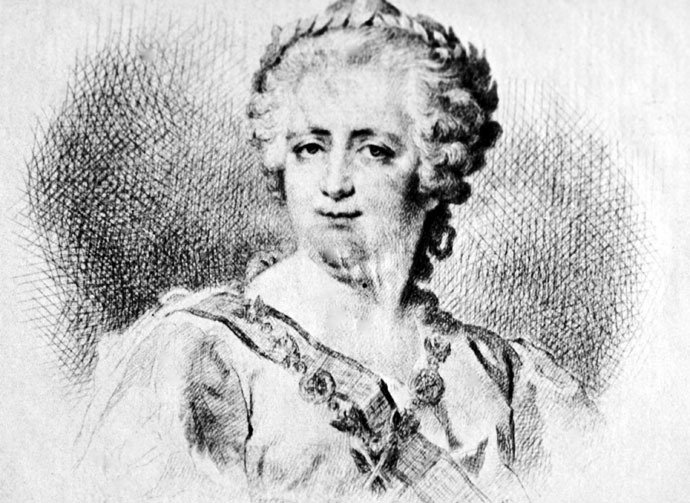
The exact date of the museum’s founding is unknown, so it was decided to celebrate its birthday on the day of the Saint Catherine – December 7 - in honor of the “founding mother”.
Hermitage– from the French ‘ermitage’ translated as ‘quiet retreat’ - was founded by the Empress in 1764, who bought the collection of a German entrepreneur Johann Ernst Gotzkowsky gathered for the Prussian emperor Friedrich II.
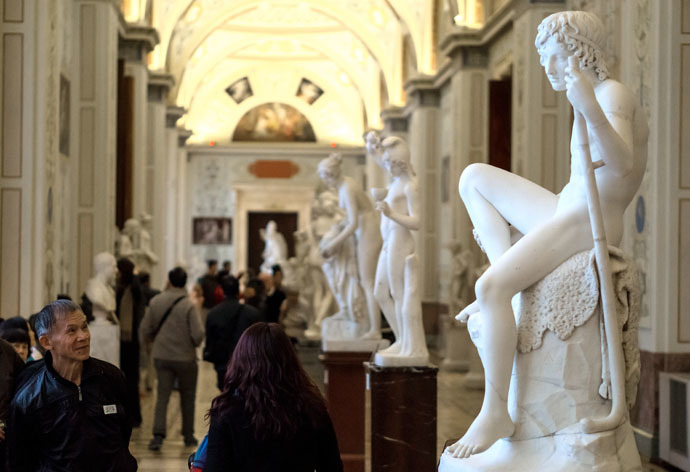
Meanwhile, December 9 marks the Day of Saint George – one of the most revered saints in Russia. The Winter Palace – the main building of the museum and former official residence of the Russian monarchs - houses St George's Hall, also referred to as the Great Throne Room.
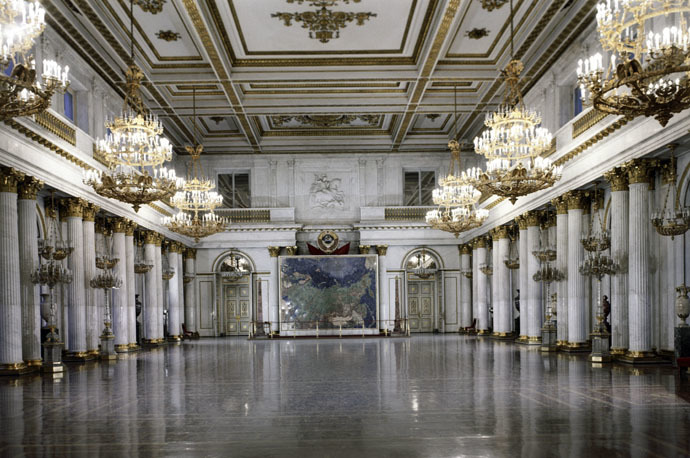
Between the two significant dates is the birthday of the museum’s head – Mikhail Piotrovsky, who is also celebrating his 70th anniversary this year.
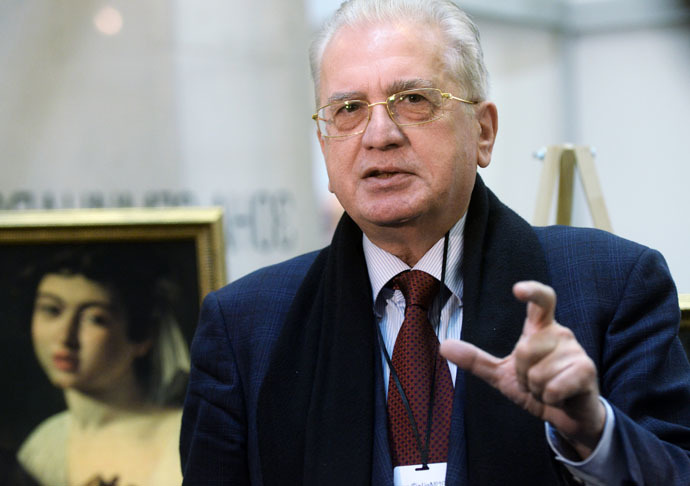
“Who would we be without museums? They show that art is eternal. I really like the statement made by Mikhail Piotrovsky, that museums do not exist in order to present, but in order to preserve,” said a renowned Russian filmmaker Aleksandr Sokurov, as quoted by Vecherny Petersburg newspaper. “The face of our civilization - the civilization of the Old World is much more dependent on museums than on film sets, I hope this will not offend my colleagues,” he added.
Anniversary of Hermitage! View of Winter Palace from Neva river.1900-s. K.Bulla. Collection of @museumRAH #Эрмитаж250pic.twitter.com/91Js8U1HJJ
— Музей РАХ (@museumRAH) December 7, 2014
The courtyard garden of the Winter Palace. 1900-s. K. Bulla. Collection of @museumRAH #Эрмитаж250pic.twitter.com/nMW0J8ozMv
— Музей РАХ (@museumRAH) December 7, 2014
The Hermitage is comprised of six buildings, while five, named the Winter Palace, Small Hermitage, Old Hermitage, New Hermitage and Hermitage Theatre, and are open to the public. The collection features more than three million items, one million on permanent display, including paintings, drawings, sculpture, applied art, archaeological finds and numismatic material.
